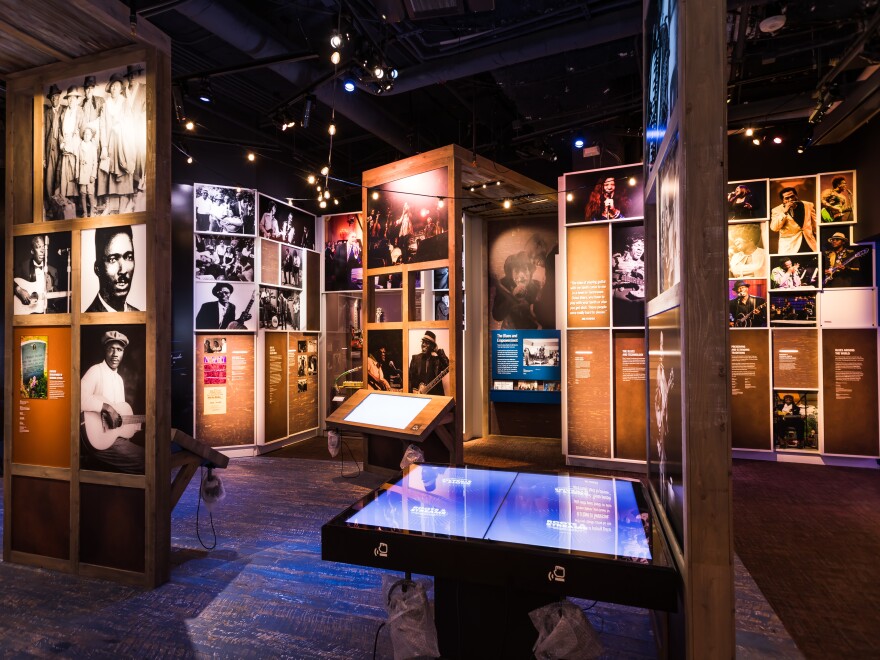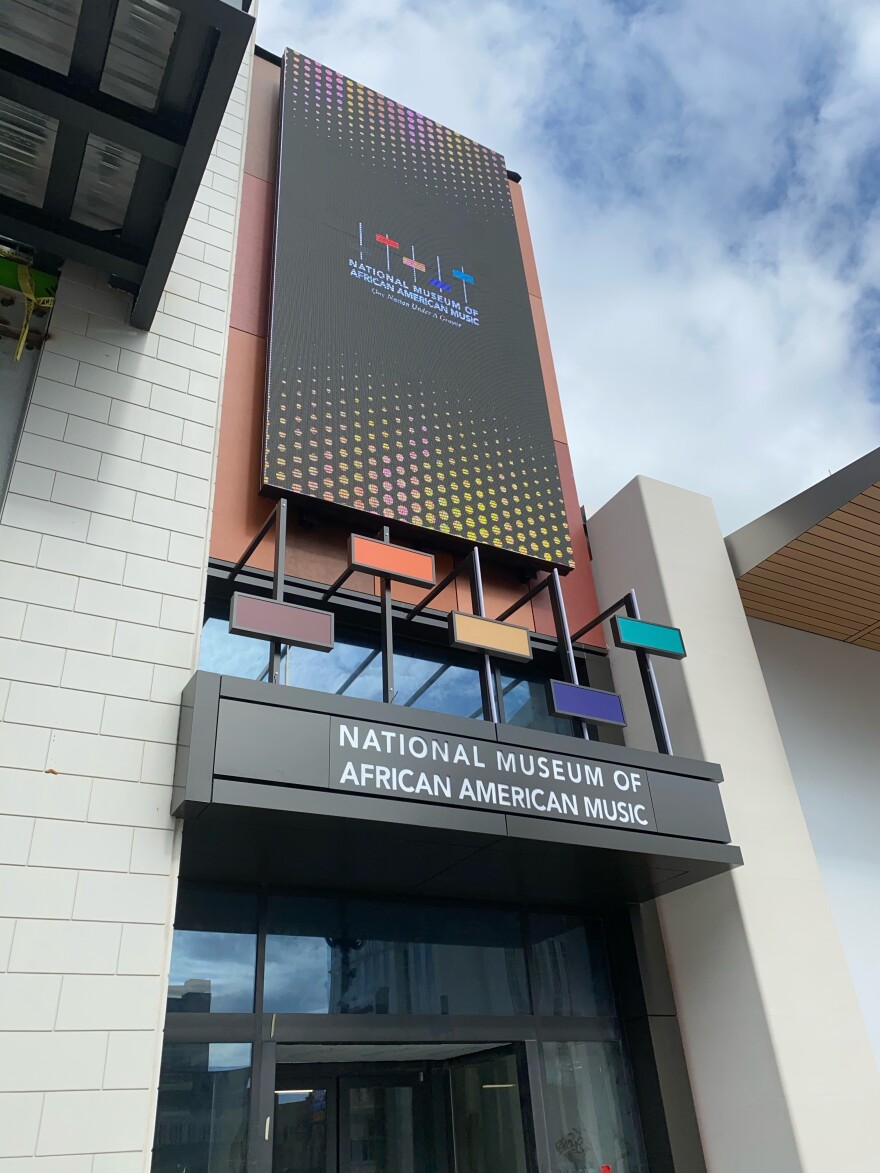For decades, Nashville's tourism has drawn in mostly white tourists for its country music, bachelorette parties and honky-tonks on lower Broadway. But with the opening earlier this year of the National Museum of African American Music, the city hopes to serenade more diverse tourists.
The walls are lined with national and local history, including a focus on the pioneering Fisk Jubilee Singers. The local HBCU students were direct descendants of enslaved people who went on tour and made Negro spirituals popular around the world. The group is the reason Nashville is deemed Music City, and recently won a Grammy.
Quiana Young, a resident of Frisco, Tex., had never heard of them when she visited the museum while in town for her son's soccer game. "I've always thought Nashville, country music—I mean, that kind of seems how it's presented on television and movies," she says.
At the museum, Young was greeted with history about Black artists and their genre-stretching impact. The museum also offers chances for visitors to get in on the action, like in the "Wade in the Water" exhibit, where museum goers dress up and play choir.

For at least a decade, Nashville city leaders have been working to expand the Music City brand to include people of color. "So instead of it being the country music capital of the world, it would include country music, but it would be the music capital of the country," museum C.E.O. Henry Beecher Hicks says.
But this wasn't the original idea for the museum. In 1998, two community leaders, Francis Guess and Dr. T.B. Boyd, pitched a Museum of African American Music, Arts and Culture. It was going to focus on all things Black Nashville, including fine arts, sports, politics and our three HBCUs.
For years the idea was refined in boardrooms and around the city. While that was simmering, the city was trying to change its national brand: "The hillbilly," says Butch Spyridon, president and C.E.O. of the Nashville Visitors Bureau. "Do you wear shoes? Do you have tall buildings? Do you have restaurants?"
Spyridon has been in on the 20-year rodeo of revamping the city's image. "We're already pretty diverse," he says, matter-of-factly. "We just have kept it hidden."
He saw the museum as a piece of the larger picture he was working to create, but thought it should focus just on music. Spyridon was thinking about the tight market for civil-rights museums, with the Lorraine Motel to the west of town and the Birmingham Civil Rights Institute deeper south.
"Being one of 10 is not near as cool as being one of one," he says.
Folks started to realize the theme of all their conversations was music. Once everyone was on board, they decided to music would be the beat that the local history and other cultural elements would play to.

"Jimi Hendrix says, I had to learn how to play the guitar with my teeth cause in Nashville, if you don't play good, they'll kill you," Hicks says, relating a quote displayed in the museum's Crossroads gallery, which focuses on the Great Migration and blues music. "An artist of national and international acclaim, but really making the point of how critical Nashville was to the development of his music and his musical styles," he adds.
Hendrix, like Little Richard and Etta James, cut their teeth on Jefferson Street. That was before the government ran interstates through the historically Black part of town. It's an area where many thought the museum should end up, but after two decades of stops and starts it ended up downtown.
Nashville native and hip hop artist Brian Brown says it would've been nice for it to land on Jefferson Street. "But for the change that needs to be seen in this world, and for people to understand the type of impact we've made, put it right there, smack-dab inside of the country-wack honky-tonks, man," he says.
Hicks says the location allows tourists and natives to learn about Black people's impact on Nashville and the overall music industry. Plus, being in the center allows more foot traffic for the museum to thrive financially.
"While the museum is not in the historically Black community of the city, it is now in the center of the city," Hicks says. "And hasn't that always been the point: to center this African-American story in the narrative of what Nashville is?"
Copyright 2022 NPR. To see more, visit https://www.npr.org.



